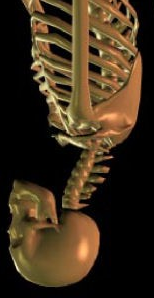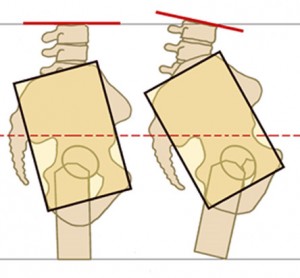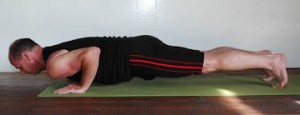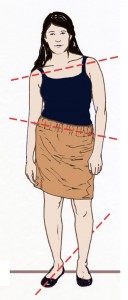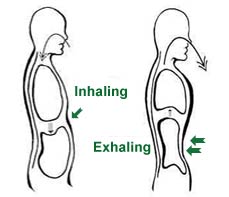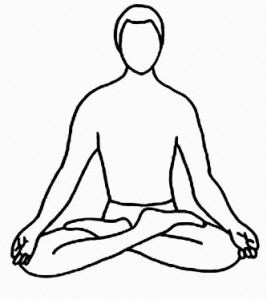Ten Reasons Yoga Might Be Bad For You
Ten reasons yoga might be bad for you isn’t a list of reasons not to do yoga.
It is intended to encourage people to do yoga consciously, with a specific eye on what their body needs at the moment. But also, and possibly more importantly, what the body needs to age well.
I have a phrase I often repeat in my classes. What you can get away with in your 20’s, 30’s, and 40’s might come back to haunt you in your 60’s, 70’s, and 80’s.
While I love yoga for the workout it provides, it should be more about building a vessel that accepts and cultivates the breath in pursuit of a long healthy life.
From my perspective, you need to approach your practice as a means to change, rather than reinforce, long-held conditioned patterns.
Exercising is better than not exercising but if you are doing it incorrectly it will not add up well over time.
1. Forward Head Posture And Headstand
Forward head posture is the most common form of misalignment– along with a tucked pelvis and turned-out feet.
In fact, forward head posture is most often the result of a tucked pelvis and weak abdominal muscles.
If you fall into this category, and so many of us do, it is probably not wise to put the weight of your skeleton on top of a misaligned cervical spine.
Even if you are able to get yourself up into the pose you will be building all of the wrong muscles and often reinforcing your bad posture.
While I do headstands myself, I stopped teaching them to groups a long time ago.
2. A Tucked Pelvis And Tadasana
Tadasana is the foundation pose of many yoga styles.
Your yoga practice should be an ideal place to work on changing your posture and long-held conditioned patterns.
But most people show up to yoga and continue to reinforce, or make worse, their postural inadequacies.
For many students, Tadasana is very often a more active version of bad posture.
At the beginning of each class, I ask people to stand up straight in tadasana.
Then I walk around un-tucking every student’s pelvis (except for the few that aren’t).
Finally, I ask them to return to where they began, watching them re-tuck and lean backward, compressing their lumbar spine.
It is essential to discover what is a neutral pelvis.
3. Having Excessively Loose Joints (Hyper-Mobility)
Some people have more space between their joints than others.
It is good to be flexible with a wide range of motion but there is a large contingent of people who are too loose, which can easily lead to injury.
In a class of twenty people there will be a mix of loose, tight, and somewhere in between.
A teacher would have to be pretty amazing to provide for everyone’s needs in this context.
Personally, I don’t worry too much about the tight people; it is hard for them to overwork, their bodies simply won’t go where they can’t.
The people in the middle are usually okay as well, but the loose must be hyper-vigilant if they want to serve and protect their bodies.
It is essential to develop the necessary tension in muscles and ligaments to support an excessively mobile skeleton.
4. Carpal Tunnel Syndrome And Downward Dog
Many doctors tell patients with carpal tunnel syndrome to do yoga because it can help strengthen the hands and wrists.
But most carpal tunnel issues originate in the neck and basic postural corrections are key to alleviating the injury.
The problem is many people with carpal tunnel syndrome don’t know the anatomy of their issue.
There is a tunnel formed by the carpal bones of the wrist that the median nerve passes between.
When you do downward dog all too often the heel of the palm sits flat on the floor. Ideally, our hand position creates a tunnel for clear passage of the median nerve.
If you aren’t creating that tunnel with your palm in downward dog you can actually make the problem worse.
5. Weak Core Muscles And Wheel
Most yoga classes include urdhva danurasana, or wheel pose.
Wheel pose is very difficult to do correctly. Trying to do it without the appropriate amount of core muscle tone is going to end badly for your lower back and sacroiliac joint.
There should be no thrust in a successfully executed wheel pose.
If you are someone who can’t get into the pose without turning your feet out, wheel pose might not be good for you until you develop more core tone.
All too often, turning the feet out takes us out of our core forces the butt to overwork on our way up.
6. The Shoulders And Chaturanga
Our shoulders have a wide range of motion by design, which makes them easy to abuse.
When we lower to chaturanga from plank, or from a standing pose, there are four muscles that should act to stabilize the shoulders en route.
These are serratus anterior, rhomboids, lower trapezius, and pectoralis minor.
If you do lots of chaturanga vinyasa, and the head of the arm bone consistently rolls too far forward and down each time, you won’t be developing balance in these muscles.
Most often a tight pectoralis minor pulls the shoulder blade on a sorrowful journey towards future injury.
You might get away with this for a while, but you will be developing patterns that will never serve your body over time.
7. You Do Both Sides Of A Pose With The Same Gusto When One Side Is Tighter Than The Other
We go to yoga to stretch with a capital S – which is a beautiful thing.
But we are all tighter on one side of the body than the other for different reasons.
So, say you are in down dog and come to a lunge on your tight right side, which might be frustrating.
You give it your all, but your all doesn’t take you very far.
Then you step back and step the left foot forward. As the left side has more room to move you take advantage of this and go as deeply as you can.
While this makes emotional sense – we are there to move as deeply as we can – over time it won’t go well.
This simple repetitive pattern can end up increasing the body’s imbalances rather than bringing us closer to the middle ground that we are looking for.
8. Opening the Chest and Breathing Abdominally
There are three main ways that we breathe: abdominal, thoracic, and cervical.
In abdominal breathing, ideal in most situations, the diaphragm (the main muscle of breathing) is supposed to descend, pushing the belly out slightly.
When I am teaching and I ask everyone standing in tadasana where they think the breath should go when we inhale, almost everyone responds “the belly”.
Then I ask where it is going at that moment and the answer is usually “the chest”.
With the exception of ashtanga yoga, where you consciously employ the bandhas in order to breathe only into the chest (thoracic), I think abdominal breathing is the way to go.
Teachers usually tell you to stand up straight, open the chest, take the shoulders back, or a variation on that theme.
This instruction shouldn’t interfere with diaphragms descent into the abdominal cavity.
But…
The front of the ribcage is not supposed to lift to help you stand up straighter.
Once the sternum lifts too much, the ribcage is no longer level. At that moment the diaphragm is no longer free to drop, forcing the breath up into the chest.
The quality of our breathing is a serious issue for so many people in and out of yoga classes. The quality of our breathing needs to be addressed in the search for a healthier practice and longer life.
9. Yoga Isn’t Meant To Be A Group Activity.
The practice of yoga, at its root, is meant to be an exchange of one teacher to one student. A guru/disciple dynamic that has only been subverted in the last hundred years.
Not paying attention to the historical context for such a profound energy practice can have real consequences.
Group yoga classes are seriously fun and exciting, but not necessarily to the point of yoga with a capital Y.
And on that note, here is our final reason…
10. You Think Your Teachers Know What They Are Talking About
It is all too easy to become a yoga teacher.
And, while there are many great teachers out there who truly know their stuff and teach beautifully precise and informed classes, there are just as many who aren’t.
The truth of the yoga world is that there are so many yoga centers and so many yoga classes.
Hiring practices, in my mind, should be akin to becoming a college professor – publish or perish!
However, many teachers are hired on the basis of personality and looks (both valid attributes) and how many people they can put in the room. It is a business after all.
It is the student’s responsibility to be discerning.
Just because someone stands at the front of the yoga room doesn’t mean that they have a clue about telling you what to do with your body.
When I am teaching I often like to say that it is my job to be confident and act as if I am correct.
It would be ludicrous if I didn’t. And, while I genuinely think I am right about everything… maybe I’m not.
***
The world needs yoga (and exercise in general), and I will even grant that it is better to do yoga badly than not at all.
But it would be better for everyone to take some time to examine how they accomplish the practice outside of what their teachers tell them.
Whether pursuing yoga for spirituality or exercise, students should spend most of their time getting to know themselves, inside and out, in the search for a healthy life.

